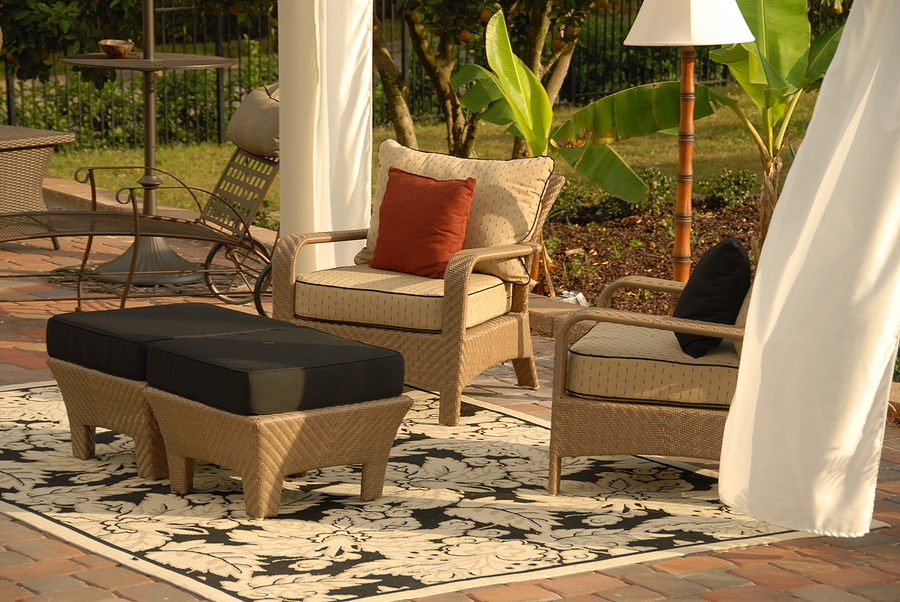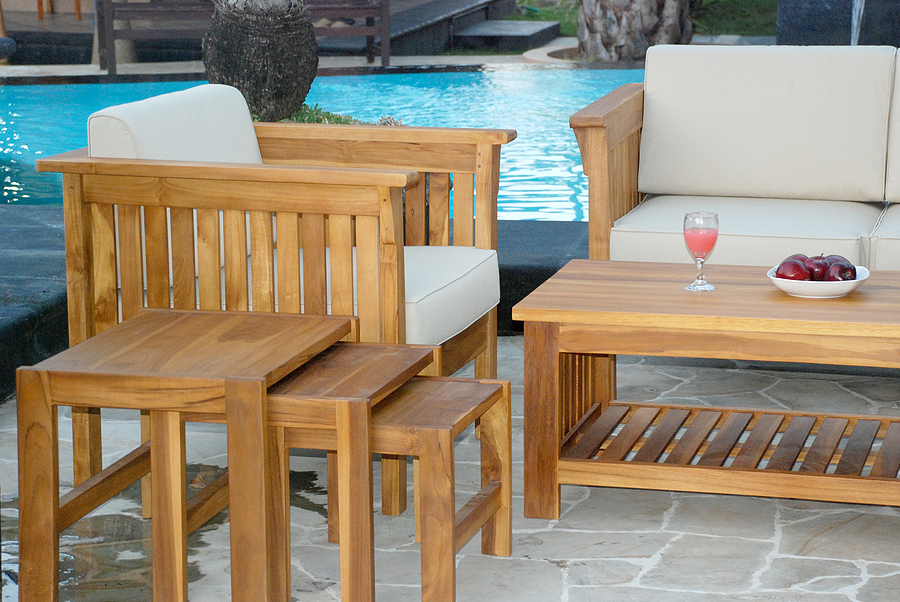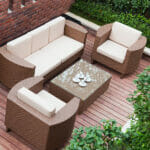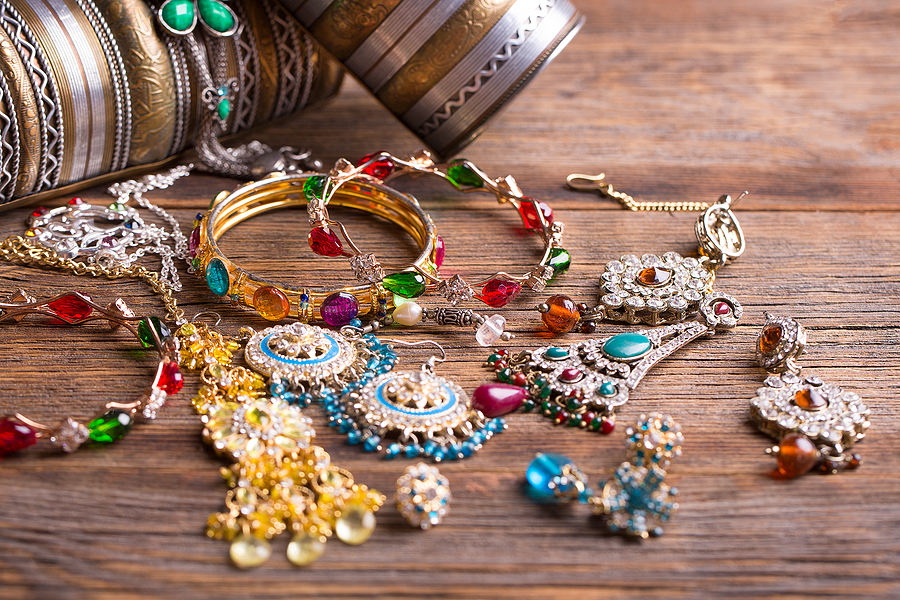“Nothing lasts forever”—The statement is especially true for outdoor patio furniture exposed to direct sunlight and dirt.
If you own patio furniture, then fading is the most common problem you’ll have to face. “Fading” refers to a situation where your pieces of patio furniture start to lose their colour and design. Of course, as you use your patio furniture, you’ll also experience other problems like wear and tear.
The sun’s rays are the catalysts behind your furniture’s fading and wearing out. Direct sunlight exposes your furniture to UltraViolet rays UVA and UVB. These rays penetrate your furniture’s surface and erode its colour.
Dirt is the other culprit that causes staining and even fading. In addition to that, you also have the usual friction and accidental damage.
So, is there a way you can refurbish your worn-out patio furniture cushions?
Yes, follow our guide, and we’ll show you how you can restore your worn-out patio cushions to their initial sate. It’s even possible to upgrade and make them better.
Stay away from sew-upholstery
Table of Contents
It’s only natural for people to seek professional help when reupholstering their outdoor furniture. Sure, that might be the best option if you can’t do it yourself. Nonetheless, we advise against professional upholstery because it’s costly and there is no fun in it.
No, you don’t need sewing skills or designing talent. All you need is your unique personal taste. Next, go ahead and explore the wide range of outdoor fabrics available online.
We know the large variety can be overwhelming. Nevertheless, we advise you to stick with the preferred colour and design that matches your patio theme. Remember, matching is Design 101.
Are you looking for jaw-dropping patio furniture? Visit this page.
Equip yourself
Get the right tools for the job. Below are some of the most crucial tools for the reupholstering project.
- Fabric scissors
- Staple gun
- Staple removal tool
- Outdoor fabric
- Paper
- A non-smearing marker
- A pencil
Trace the seat
Let’s get started.
First, detach the seat from your chair. It’s the main reason why we always advise customers to buy patio furniture with removable seats. Why? Because replaceable seats are easy to take apart, repair, and refurbish. In addition to that, they are also easy to store when not in use. With good storage, you can minimize fading and wear.
Next, use the non-smearing marker to trace the seat’s outline on a piece of paper. It doesn’t have to be a blank piece of paper. Even a newspaper can do the job.
Cut the size
Take your pair of scissors and cut out the seat’s size from the paper. Remember, the cut-out is there to help you get the shape you want to upholster.
While you are at it, don’t forget to add around 4 inches of fabric all around the cut-out. The excess will enable you to get over the seat’s edges and allow you to secure it at the seat’s bottom.
Cut the fabric
I’m assuming you already bought your preferred fabric. Most fabrics are usually 54 inches wide (that’s wide enough for several outdoor seats).
Before tracing, remember to place the fabric wrong side up to avoid damaging its colour and design. Also, make sure the design is evenly spread out with no wrinkles.
Next, place the cut-out on the fabric and trace the seat’s outline. Remember, you have to add around 4 inches all around to fasten the fabric onto the seat. Finally, slowly cut out the fabric with your pair of scissors.
Remove the old fabric
Flip the seat and remove the old fabric. Keep in mind that different furniture manufacturers use different fastening techniques. Some might use glue, and others use staples.
Staples are relatively easy to remove. All you need is a staple-remover or a flat screwdriver. On the other hand, upholstery glue might be more challenging to remove.
You’ll need some cotton swabs and fingernail polish or acetone. Dip the swabs in either, then apply on the upholstery glue. Let it sit for a few minutes, then pull the old fabric from the seat. Next, take a clean cloth and thoroughly wipe the area to remove all the dirt residue or glue remains.
Attach the new fabric
Spread the fabric cut-out on a flat surface (right side facing down). Next, flip the seat and place it on the wrong side of the fabric. Center it on the fabric.
Now wrap the fabric and staple it on the backside of the seat. It doesn’t matter if the fabric overlaps the stapling area. Just make sure it doesn’t cross over to the top side. In addition to that, be on the lookout for creases and dimples. They can disfigure the design.
After every few staples, frequently flip the seat to see how the fabric looks like at the top.
Assemble your chair
Flip the seat and inspect your work. Make sure there are no creases or overlaps. Don’t worry. If you made any mistakes, you can remove the staples and smooth out the fabric.
Finally, you can fix or screw the seat in place. We advise you to get new screws or fastening hardware.
Cushion spray painting
Not all patio cushions are upholstered. Some are spray-able. You might also consider spray painting if you still prefer your current cushion fabric.
Cushion spray painting is as easy as buying a can of outdoor fabric paint and spraying your patio furniture. It’s also a cost-effective solution since quality outdoor cushions can be expensive.
Use slipcovers
Slipcovers enable us to breathe life into old and worn-out patio furniture. You don’t even have to do anything to the cushions. A well-draped piece of outdoor furniture is nice to look at and use.
Fortunately, slipcovers come in so many colours and designs. Since they are easy to apply and remove, you can use your creativity to explore new and different styles.
Image Source: BigStockPhoto.com (Licensed)
Related Categories: Home, Reviews








